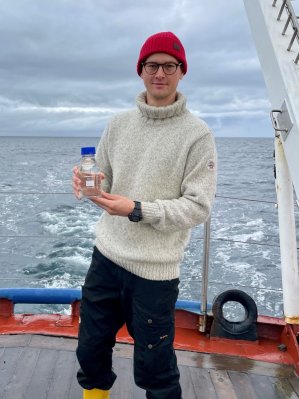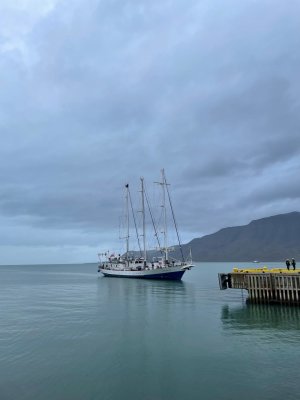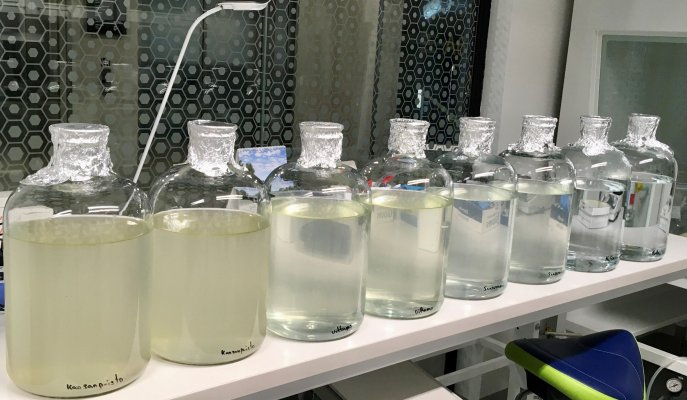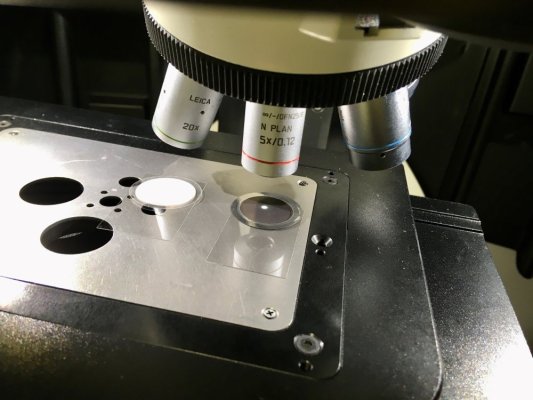An invisible threat – concentrations of nanoplastics in the Archipelago Sea are now being measured
Nanoplastics are tiny pieces of plastics, smaller than bacteria, which originate as a result of the wearing and breakdown of plastics. We are already quite familiar with microplastics, but nanoplastics are still lesser known. Nanoplastic particles are 1,000 times smaller than microplastics. In addition to our environment, they have been found in human bodies, even in breast milk. There is an obvious need for researched information.Published 7.11.2024
Text: Arto Hiltunen
Image: Shutterstock
Editing: Viestintätoimisto Jokiranta Oy
Plastic littering became an environmental issue in the 1970s – roughly 20 years after plastics became a commonly used material. Larger pieces of plastic litter, such as plastic bottles, are easily found in the environment, but it is much more difficult, if not impossible, to spot and remove micro and nanosized plastic litter. The fact that our environment is extensively being polluted with microscopic fragments of plastics is a disaster, and we should immediately take action to stop it.
Nanoplastics originate from the gradual breakdown of plastic litter in our environment. Micro and nanoplastics are also released from various plastic products when they get worn from use, such as car tyres, which are a major source of plastic particles. According to recent research, large amounts of micro and nanoplastics are also being released from new plastic products intended for use with foods. For example, it has been shown that plastic particles are released from baby bottles, tea bags and the plastic containers for microwave meals.
Tracking of nanoplastics is difficult
As we are exposed to micro and nanoplastics on a daily basis, there is clearly a need for researched information about the consequences of such exposure. The general understanding is that particles that are less than one micrometre in size are capable of entering our cells and those of less than 200 nanometres may cross the blood-brain barrier. Researchers are particularly concerned about extremely small nanoplastics, which are assumed to exist in our environment in large quantities. We have already discovered the existence of micro and nanoplastics in human blood, breast milk, placentas and lungs.
There are no exact figures concerning the amounts of nanoplastics in our environment. The particles are hard to detect and research infrastructure specialised in nanotechnology is needed. In November 2021, the Archipelago Research Institute within the University of Turku began developing a method to detect nanoplastics in seawater samples. Thanks to this development work, we now have operational tools for measuring the concentrations of nanoplastics in water.
Researched information helps us to evaluate threat scenarios
With the funding granted by the Sakari Alhopuro Foundation, we are currently carrying out initial measurements in order to determine concentrations of nanoplastics in the Baltic Sea. Reliable researched information about the extent of pollution is necessary for the evaluation of the severity of the threat caused by nanoplastics. In addition to the investigation of seawater samples, we have initiated preliminary surveys concerning the amounts of nanoplastics in indoor air.
Our research team uses various microscopical methods for the search of nanoplastics. The types of plastic (PET, PE, PP etc.) in the samples are identified by means of Raman spectroscopy. A key aim in our work is to produce high-quality images of nanoplastics. This will enable us to develop concrete tools to address the invisible threat presented by nanoplastics. High-quality images of nanoplastics will be generated through Field Emission Scanning Electron Microscopy (FESEM). The images will reveal the geometry of plastics: are the particles angular, fibre-like, sharp or round? The knowledge thus gained will be of help in the evaluation of the impacts of nanoplastics in different environments and organisms.
Boundary-crossing collaboration
In August-September 2024, I had an opportunity to take part in an international expedition to the Svalbard Islands. We collected seawater samples for the purpose of determining nanoplastics concentrations in the water. The aim of our research team is to produce both locally and internationally relevant researched information about nanoplastics.
One of the strengths of our team is the collaboration between various scientific fields. The solid expertise of the Archipelago Research Institute, combined with the profound knowledge of our local waters as well as the chemical and physical analysis resources, constitutes the basis for our ability to resolve the challenges presented by nanoplastics. Our long-term goal is to care for our environment by monitoring its status and creating technological solutions to address the identified problems.

The quantities of nanoplastics will be determined from seawater samples that were collected from the Svalbard Islands and Norwegian coast. Image: Arto Hiltunen

The research team travelled to the Svalbard Islands on the research vessel Ocean. Nine researchers, including Hiltunen and colleagues from Italy and Poland, joined the crew for the expedition. Image: Arto Hiltunen

Samples from the Turku region are analysed in the laboratory. The water cloudiness makes it difficult to detect nanoplastics. Image: Arto Hiltunen

Nanoplastics are identified by means of Raman spectroscopy using the SERS (Surface-enhanced Raman Scattering) phenomenon. Image: Arto Hiltunen

Arto Hiltunen, M.Sc.(Tech.), Ph.D. in Technology, investigated, for his dissertation in 2020, nanostructures for use in the production of hydrogen fuel from water. He has also been involved in the development of next-generation solar cell technologies based on the interaction of nanosized structures. In his current work at the Archipelago Research Institute within the Biodiversity Unit of the University of Turku, Hiltunen is applying his experience in nanotechnology in order to develop solutions to the nanoplastics problem.
Literature:
Hiltunen et al., ChemRxiv, (2023) Expanding sample volume for microscopical detection of nanoplastics, https://chemrxiv.org/engage/chemrxiv/article-details/66027d50e9ebbb4db98c8180 (Hyväksytty julkaisuun Marine Environmental Research, Elsevier)
XiaoZhi Lim, Nature 593, 22-25 (2021), Microplastics are everywhere — but are they harmful?, doi: https://doi.org/10.1038/d41586-021-01143-3
Wagner, Nature Nanotechnology volume 14, pages 300–301 (2019), Things we know and don’t know about nanoplastic in the environment, https://www.nature.com/articles/s41565-019-0424-z
